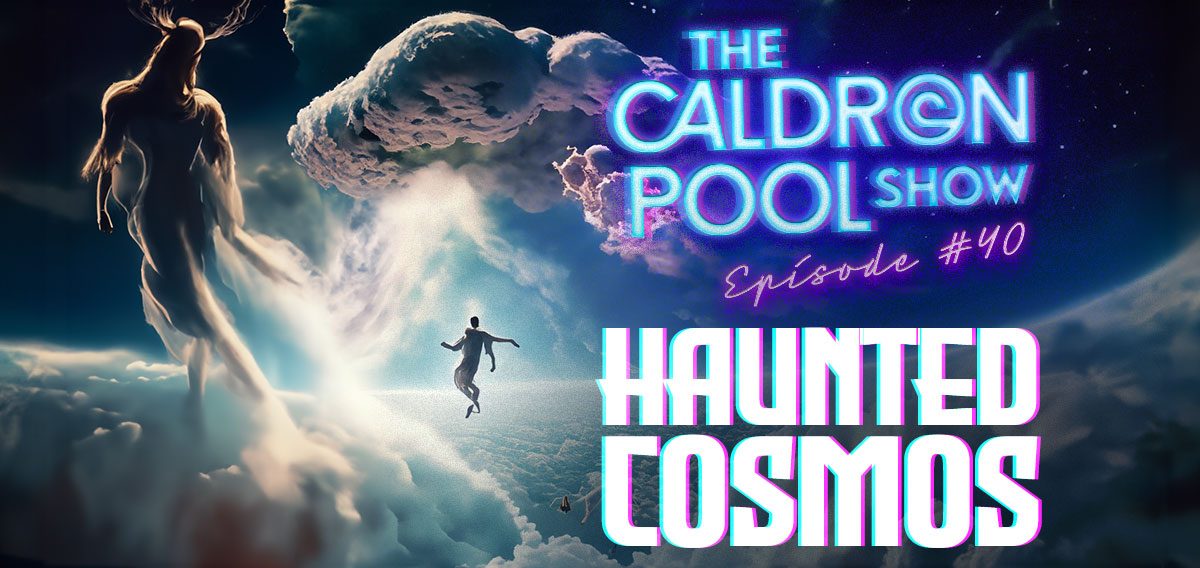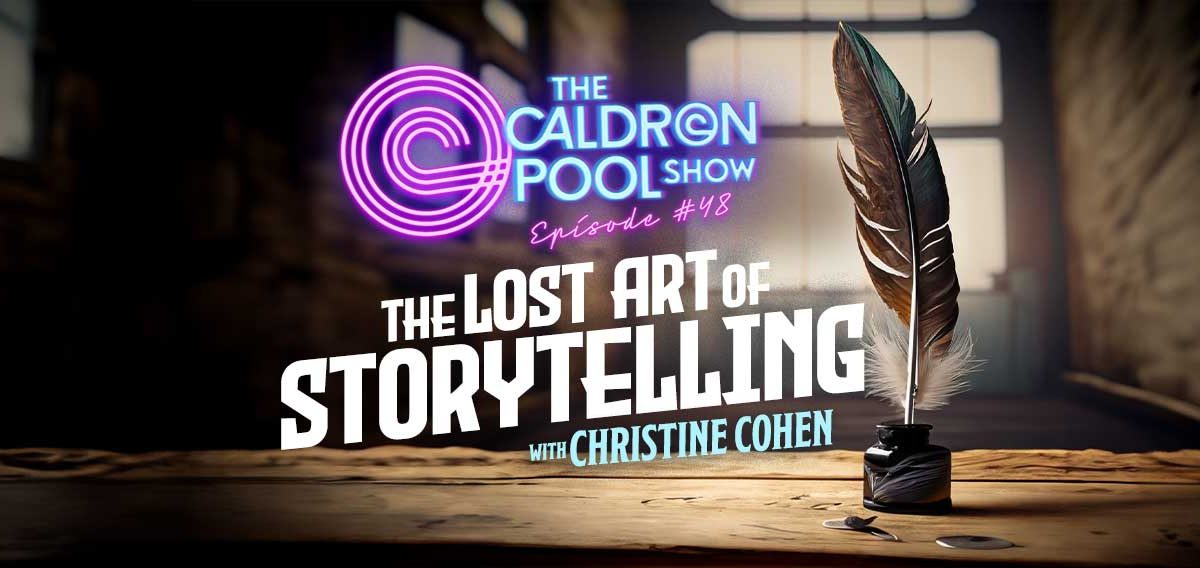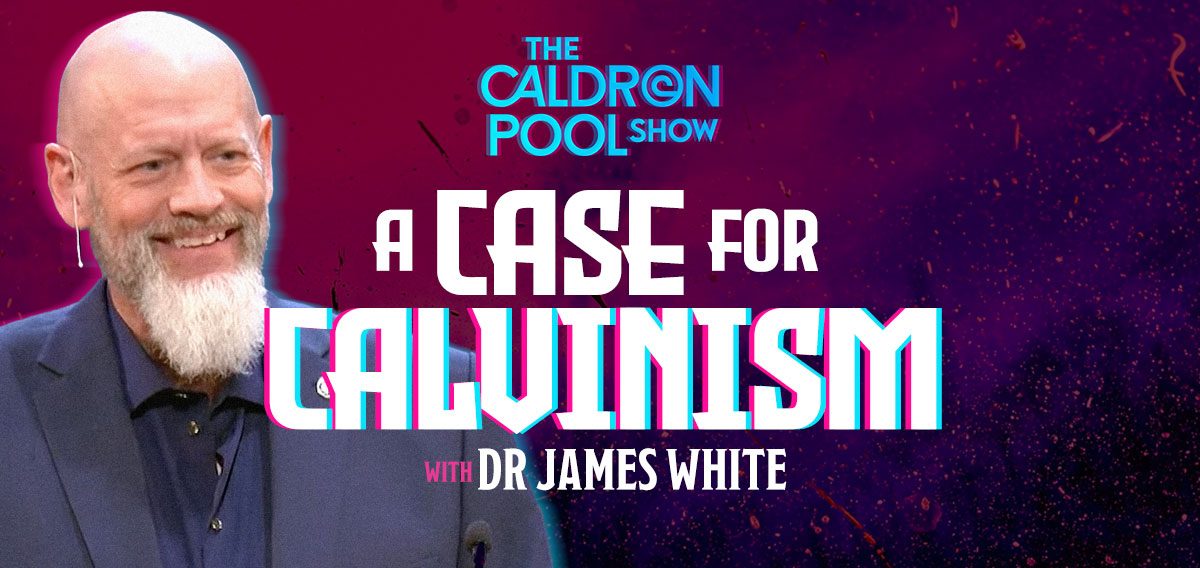Masks, it seems, are here to stay long past Halloween, and it is worth asking—to what effect? What are the consequences of wearing masks? And what are the consequences of not wearing masks? The latter question is easy to answer; just read the regular updates on the CDC website or visit your local grocery store. State regulations, governors’ orders, and local business practices have converged to declare with legal force—no mask, no service.
Following this line of thinking many churches have pursued the same approach. With good intentions, especially in the early stages of COVID-19, many sought to love their neighbor by wearing a mask. Yet, as masking as become the new normal, I want to ask: What are the not-so-hidden consequences of hiding the face for months on end? And what are the consequences for churches who are called to live distinct from the world and who are to proclaim the glory of God in the face of Christ?
While medical experts continue to debate the efficacy of preventing COVID-19 with a cloth mask and doctors demonstrate the inefficiencies of various masks, I want to approach this subject theologically. Opinions continue to change about masks, but with the exception of a few articles (e.g., They Don’t Own Your Face You Know), I have seen little consideration for the theological impact covering the face has on humanity and the church who gathers to worship God.
With that in mind, I want to answer a few questions: What does Scripture say about the face? What impact does hiding the face on a regular basis have on humanity, the glory of God, and the gathering of God’s people? In particular, can we worship God face-to-face with masks constantly on? And if so, what implications do that have on the church?
As we will see from Scripture, the veiling of the face, with no certain change forthcoming, distorts our ability to embrace the knowledge of God, and hinders the community of faith created to reflect the image of Christ. More than that, masking as a normative practice in worship services runs into multiple New Testament commands. In other words, the commands of God are strained, if not violated, by making mask-wearing the normative practice.
What follows is not the only line of argument we need to consider when making decisions about gathering God’s people in these days and wearing or not wearing masks. Loving our neighbor (Romans 12), obeying civil magistrates (Romans 13), and considering weaker brethren and not violating conscience (Romans 14) must all play a part in our decisions. Yet, we must not forget that Romans 12–14 follows an expansive description of the gospel (Romans 1–11), and is followed by Paul’s description of the gospel ministry.
Thus, setting Romans 12–14 in context, it is my contention that in recent application of Romans 12, 13, and 14 for mask-wearing without end, we are picking up habits of heart and face that may interfere with the clearest declaration of God’s mercies (Rom 12:1) in the gospel (Romans 1–11 and 15). In that vein, I offer this God-centered argument, that seeing and showing the face matters. And I ask Christians to consider the impact of endless masking on the spiritual health of image bearers and Christ’s Church.
God Created the Face to Reflect His Glory
Throughout the Old Testament God reveals himself through anthropomorphisms, images and descriptions that use human forms (anthropos = man + morphé = form) to describe God. While God does not have a body or a face, his attributes are regularly identified with human features. For instance, 2 Chronicles 16:9 speaks of the eyes of the Lord running throughout the earth. His patience is literally spoken of as being “long-nosed” (see Exodus 34:6), i.e., it takes a long time for his nostrils to flare in anger. Furthermore, Moses spoke to God “mouth-to-mouth” (Num. 12:8) and knew him “face to face” (Ex. 33:11; Deut. 34:10). In short, to know God is to know his face, as David said to the LORD in Psalm 27:8: “You have said, “Seek my face.” My heart says to you, ‘Your face, Lord, do I seek.’” By contrast, when God hid his face from David, he was dismayed (Ps. 30:7). The veiling of God’s face is perceived as a profound loss (Ps. 44:24), even judgment (Ps. 80:16).
These verses just scratch the surface of the places where God is described in human form.[1] The reason for this is manifold, but two realities stand out. First, God created humanity in his image to reflect his myriad perfections. And though sin marred this image from the beginning, human form was and is and forever will be the greatest means by which we come to know the living God. To be clear, this is not an endorsement of natural theology—i.e., a belief that we can know God by studying man. Rather, it is the biblical testimony that God has revealed himself in human form. And nowhere is this more evident than in the Incarnation.
This is the second reality. Jesus is the fullness of God in bodily form (Col. 1:19; 2:9). Critically, the human form is what God intended for the Son to take on when he added a human nature (body and soul) to his divine nature (see Phil. 2:7–8). This includes a face exposed, able to express joy in salvation (Luke 10:21–22), sorrow in betrayal (Luke 22:62), and pain in crucifixion. Do not miss the importance of Christ’s face. Because of his exposure to God, Moses had to veil his face (Ex. 34:33–35; 2 Cor. 3:7, 13). Jesus did not.
Returning to progressive revelation of God in the Old Testament, the language of God’s eyes, nostrils, mouth, and face all prepared, albeit in fragmentary ways, the coming of God the Son Incarnate. With that in mind, when we read about God’s face in the Old Testament, we must recognize how God’s revelation is fulfilled in Christ, but also how that revelation is dependent on the creation of human faces.
This is the point at issue today. When human faces are covered by masks, we are veiling something that is necessary to embrace a knowledge of God. In fact, as we will see below, the gospel itself is the unveiling of God in the face of Christ. This means that seeing faces is not optional for knowing God; it is essential. Because when an entire population of image bearers covers their faces, the sea of covered faces says something about God and the world he has made. Covering the face is not like covering the elbow or the ears, it is the place where personality is most exquisitely communicated. And we should not assume that the endless covering of faces will have no effect on the way that people relate to God and one another.
The Soul of Humanity is Expressed in the Face
Perhaps before issuing a worldwide mask mandate with no expiration date, we should have asked: Wherefore the face? For those who believe that God created everything for a purpose, we can turn the question to him: Why did God make faces?
Again, an answer requires a whole theology of the body. But the short answer is that faces reflect the soul of a man or a woman. Consider how the face displays all manner of inner joys and sorrows. From just a cursory reading of the Wisdom Literature, we find that the human reflects shame (Ps. 34:5; 44:15; Isa. 3:9); dishonor (Ps. 69:7); gladness (Ps. 104:14–15; Prov. 15:13); defiance (Prov. 7:13; 21:29; Eccl. 8:1); favor (Ps. 17:15); wisdom (Prov. 17:24; Eccl. 8;1); sadness (Eccl. 7:3); and love (Song 2:14). We could list more, but this list proves the point: If you want to know what is going on in the heart of someone, their face is often the key.
To say this more broadly: body language is vitally important. One of the greatest pleas in the Psalms is for God to show us his face (see Pss. 13:1; 27:9; 69:17; etc.). Why the face? Because the face is the instrument God has given to us to reveal ourselves. Consider the joy of a mother’s smile or the pain of a father’s frown. These important “wordless messages” are wholly lost without the human face. And thus, as we seek to live life with other image bearers, we need to see the faces of others.
This is true in general, and I suspect that everyone who has walked through a sea of masked faces understands the isolation that it causes. Moreover, the masking only heightens miscommunication and frustration, not to mention interpersonal separation. This not only comes from the way cloth masks garble our words, but from the fact that many—here I’m thinking of hearing impaired and ESL speakers—depend on seeing the lips of others. God did not create us to exist with constant coverings on our face.
In ministry, countless are the times that I have pressed a person to consider the claims of Christ based upon what I have perceived in their facial expressions. In preaching, when I see confusion expressed in the face, I often explain the point in more detail. In counseling, when I see sorrow it leads me to adjust my questions or instruction. In other words, because gospel ministry is human and not mechanical, it depends upon real reactions from others. And this is impossible with masks.
To put it most pointedly, a church service that is entirely masked is one that impedes the full communication of the Word of God. Moreover, if singing the praises of God is meant to be a congregational endeavor, one where we sing to one another, and receive blessing from one another, the ongoing veiling of human faces strips this means of grace. Indeed, while removing masks during this time could expose others to physical risks; the effect of wearing masks has equal if not greater dangers (read: spiritual and eternal).
For these reasons, our church has not mandated masks. Instead, following a course of action that calls for “focused protection,” we are urging individuals to make the best decision for their families. We understand that different health conditions will lead our families to different decision points. And that could change from week to week. We respect and encourage that. But on the whole, we believe a consistently masked congregation strips the humanity of God’s people and further separates those who are called to be one in Christ.
The Church is Instructed to Gather Face-to-Face
Going beyond the deductive arguments for not wearing masks, we find a host of commands in the New Testament that cannot be fulfilled as long as masks are worn recurrently in the congregation. Let me offer four.
1. Greet each other . . .
The most explicit command that confronts endless masking, as well as social distancing, is the call to greet one another with a holy kiss (1 Cor. 16:20; 2 Cor. 13:12; 1 Thess. 5:26; cf. 1 Pet. 5:14). While the “holy kiss” part has been dropped by most American churches, the greeting part has not. And for consideration, both aspects should be considered. Here are two of the passages where this command is found.
19The churches of Asia send you greetings. Aquila and Prisca, together with the church in their house, send you hearty greetings in the Lord. 20All the brothers send you greetings. Greet one another with a holy kiss. (1 Corinthians 16:19–20)
11Finally, brothers, rejoice. Aim for restoration, comfort one another, agree with one another, live in peace; and the God of love and peace will be with you. 12Greet one another with a holy kiss. (2 Corinthians 13:11–12)
Let’s consider each of these passages and how masking interferes. In both passages, the command is to “greet.” This imperative has the sense of commanding the church to be a place of hospitality. Strangers should feel welcomed. Members should feel loved. In 1 Corinthians Paul sends greetings and urges the church to share in those greetings. Healthy churches, therefore, are places filled with loving affection and holy expressions of touch.
This is where the “holy kiss” comes in. The body of Christ is not an immaterial entity; it is a communion of flesh and blood, skin and bone, body and soul. Thus, to tell the church to avoid appropriate expressions of love is to deny a crucial part of the Christian experience. The church is a family and, in that family, holy expressions of affection are essential, not optional.
In fact, following the other passage (2 Corinthians 13:11–12), we see why such affection is necessary. Greeting one another with a holy kiss comes in the train of restoration, comfort, agreement, peace-making, and Christian love. In other words, because the church is a community of reconciliation, it needs physical ways to express that.
The holy kiss Paul has in mind is one of those ways. It is clearly not the only way, and I would not deny the replacement of side-hugs and hand-shakes for kisses, but I would strongly suggest that the total removal of physical affection in the church, as prescribed by COVID regulations runs into conflict with God’s Word.
And here again masking comes into play. Unless we excise these commands to greet one another with physical affection from Scripture, or treat these words of God as different from other commands in Scripture, we must see that the ongoing masking of the church conflicts with God’s Word. God calls his family of faith to express love towards one another. Masking runs in direct opposition to this command, making it impossible for the church to be the community more fulsomely expressing faith and love.
2. Greet each other . . . face to face.
In John’s second two letters (2–3 John), the beloved apostle ends each abruptly because he does not want to write; he wants to visit. He says essentially the same thing in each letter: Though I have much to write, I would much prefer to see you in person.
Though I have much to write to you, I would rather not use paper and ink. Instead, I hope to come to you and talk face to face, so that our joy may be complete. (2 John 12)
I had much to write to you, but I would rather not write with pen and ink. I hope to see you soon, and we will talk face to face. (3 John 13–14)
Using the Hebrew expression, “face to face,” he describes the kind of conversation he would like to have. He longs to see his friends’ faces and to talk to them in person. This he says, will complete his joy.
Lest the grammar police accuse me of misreading Scripture, I will admit, these two verses are not commands (imperatives) telling the church they must gather face to face. These verses instead reflect what we saw in our survey of the Old Testament, a godly desire to see the Lord and his saints. In fact, in Titus and 2 Timothy, we find the Apostle Paul commanding his dear friends to come to him (Titus 3:12; 2 Tim. 4:9). In this command (“do your best to come to me”) Paul is demonstrating the need for God’s people to be with one another.
At the end of so many of his letters, Paul lists countless names of people he knew and loved. The name recognition assumes facial recognition. Indeed, to be human is to see the face of family, which the church is, and to find joy. This is why John said he wanted to talk face to face with his children in the faith; he longed to find joy in God’s family. Applied to the church, seeing the faces of fellow saints is a genuine source of joy, one that is needed for saints to walk with endurance. Indeed, we need the joy that comes from seeing the faces of other saints and this is hindered by masks.
3. Display the gospel.
In Ephesians 3:10–11, Paul explains that the church displays the wisdom and power of God’s grace in the gospel. Indeed, as Mark Dever and Jamie Dunlop have observed in their book, The Compelling Community, the church is what makes the gospel visible. In other words, the church is what the gospel creates, or to put it more personally, the body of Christ is what the head, Jesus Christ, forms by means of his death and resurrection.
The importance of this for seeing one another’s faces comes in the fact that the gospel itself is a message of seeing the glory of God in the face of Christ. As Paul puts it in 2 Corinthians 4:6, “For God, who said, “Let light shine out of darkness,” has shone in our hearts to give the light of the knowledge of the glory of God in the face of Jesus Christ.” In this message of the new creation, Paul explains how the gospel reveals the unveiled face of Christ to those whom the Lord has brought into the light. As a community of that light, the church should be a place where the face of Christ is seen. And where do we see the face of Christ?
In the faces of those who have been born from above. In the radiant joy of believers, we come to see the face of Christ. Seeing this joy does not save; the word of the gospel is still necessary. However, the power of the gospel is witnessed in the church with unveiled face. As Paul says earlier in 2 Corinthians 3:18, “And we all, with unveiled face, beholding the glory of the Lord, are being transformed into the same image from one degree of glory to another. For this comes from the Lord who is the Spirit.”
This mention of “unveiled face” is not sleight of hand to urge un-masking from some out-of-context prooftext. In context, the veiled face of Moses symbolizes the deadness of the law; the glory of Moses comes from his ministry of condemnation. By contrast, believers who have been made alive in Christ, those who have seen the face of Christ in the gospel, have unveiled faces. They are able to know God and approach him, without fear of death.
Let me ask you: What do you see in a sea of masks? Among other things, you should see fear, death, and the fear of death. This fear may be fear of COVID or it may be fear of the state or fear of others who demand masks. This week I watched a woman enter a hotel lobby and offer not 1, not 2, not 3, but 4 apologies for forgetting her mask in the car. Why so many apologies? Is it fear of COVID or fear of others? And where did that fear come from? Moreover, is it a healthy kind of fear—the kind that makes you slow on sharp curves? Or is it a fear from overblown attention to a virus—in a world full of viruses—whose death rate is still remarkably low.
Similarly, we have all seen people wearing masks who are walking outside by themselves or driving in a car without anyone else. Why? I can’t give an answer for everyone, but it suggests they are fearful of contracting COVID. But just as much as the fear of others and fear of death lead people to wear masks, the ubiquity of masks should recall the same thing that cemeteries and roadside crosses do—this world is filled with death. Why are people wearing masks? Because people have died and are dying from COVID.
Yet, people die from cancer, car accidents, diabetes, and the flu. Do not forget, there are other causes of death greater than COVID this year! Thinking across time, pandemics are a part of the human story, and in many instances Christians have defied the dangers and cared for others in the face of death. When undertakers called out during the Black Plague, “Bring out your dead!” Christians often rushed in to care for the dying and diseased. Many died in the process. But importantly, those “foolish” Christians who risked and gave their life to care for others did so, because their eternal future was secure.
Today, in our secular age, men like Charles Taylor have observed the way in which eternal realities rest lightly upon us. Books like Heaven is For Real become best sellers, but then people live as if this life is all there is. The modern man, Christian or not, lives in a closed system, where life, health, and personal safety are the chief ends of man. Many preachers present Christ as the means to live a better life here and now. And others continue to hold services entirely and only online. Such a message does untold damage to the gospel, for the gospel only makes sense in the face of death—and death that is deserved because of sin.
Strangely, during this year, I have heard very little talk about eternity from Christian leaders. Instead, the conversation goes back to loving neighbors by wearing masks, shrinking services and refusing to sing in church, and other odd examples of “morbid safetyism.” Fearing the scorn of the world and ruining our witness, countless churches and their pastors have shut themselves into an endless Zoom loop. And yet, does this strategy reflect the fearlessness that the resurrection offers? Or is it a symptom of the secularism that now infects the church?
As hard as it is to say, I suggest it is the latter. And thus, if the church is going to display the gospel in this period, it will not do so by disbanding the church into online platforms. God’s people will not stand out from the world by treating the church service like your local grocery store. Rather, in order to display our strange and steadfast confidence in the resurrection, we need to gather with confidence in the gospel that raises the dead to life. With eternity in mind, let us consider what are the best options for masks.
4. Love one another.
Finally, the command to love one another eventually leads us to take off our masks. Indeed, the church who stands on the Word of God is the only community on earth that knows where their breath comes from. In Daniel 5 and Acts 17, we find two passages that remind us that God is the giver of breath. First, Daniel 5:23 speaks of Israel’s God as “the God in whose hand is your breath, and whose are all your ways.” Likewise, Paul in Acts 17:24–25, identifies the Lord of heaven as a “God who made the world and everything in it, . . . gives to all mankind life and breath and everything.”
In the context of both statements, Daniel and Paul are combatting the pernicious idolatry of Babylon and Athens. In both cities, the gods were malleable deities who could be appeased by human works. By contrast, the living God is one who stands outside of creation, is wholly independent of humanity, and gives life and breath and everything else as he sees fit. This is our God and the one whom the world does not know.
Accordingly, the world is doing all that it can to secure its life by whatever instruments they can get their hands on. Countless are the gods of this age who promise life. The state and its medical experts offer all kinds of works righteousness to stay safe and stay alive. The religiosity of this COVID moment is seen in the condemnation of those who do not wear masks and the acts of penance from those not wearing the prescribed mask.
Leaving aside the efficacy of the mask for a moment, the cultural effect is one where the mask is treated with holy devotion. How many are the patrons of stores and restaurants who hastily retrieve their forgotten mask, swearing apologies as they go. There is a religious devotion associated with the mask and such allegiance is imported into the church, when we uncritically take on the regulations of the state. Governors and other officials are offering themselves as expert protectors of the people, what in other centuries would have been called “Saviors.” Yet, their offers of protection change every few weeks, proving over and over that they cannot promise life and breath.
This is where the church steps in to love its neighbors. The greatest way we can love our neighbor during COVID is the same way we have loved them in every other century—by preaching the gospel and demonstrating the love of God. To say it in context, when we preach the unveiled face of Christ with faces unveiled ourselves, we visibly display a faith in God that the world cannot understand.
Indeed, the most loving thing we can do is to proclaim the God who gives life, breath, and everything else. And when we do that without a mandate on masks, we demonstrate a confidence in God that only comes from outside this fallen world. Tragically, the fear-mongering news cycle related to COVID has stolen the good news from many of God’s people. And when churches began to gather again after seeking to flatten the curve—if they gathered again—they reassembled people who had been catechized by the fears of the world without any corresponding good news preached in their churches.
All this being the case, the most loving thing we can do today is to call people to fear God and trust him for their life, breath, and everything else. For those whose medical condition and/or conscience lead them wear a mask, let them wear a mask. Likewise, focusing protection on those with co-morbidities should be encouraged; this is loving. But it is not loving to participate in endless masking, without raising the question of who gives us life, breath, and everything else.
Loving our neighbor means preaching the unveiled gospel of Jesus Christ and doing so with unveiled faces. Why unveiled faces? For the reasons stated above. The face is an essential part of humanity, and to cover it continually steals that humanity. Similarly, in the body of Christ, the face of Jesus is seen in his people. And when we wear masks for protracted periods of time, we cannot do all God has commanded.
Again, this theology of the face is not meant to displace the need for focused protection or to deny the seriousness of COVID. It is to declare that in a world of diseases, the face still matters. And that devotion to the state’s regulations on masks that is not informed by all Scripture says does harm in ways people are not considering today. For that reason, before churches mandates masks at all times and in all places, I offer this theological argument.
Soli Deo Gloria
This article was originally posted on David Schrock’s website, Via Emmaus.
[1] Consider another selection of texts from Douglas Wilson,
God fashioned Adam from the dust of the ground, but he did not become a living being until God breathed the breath of life into his nostrils, into his face (Gen. 2:7). The sin of Sodom was great, and came up before the face of the Lord (Gen. 19:13). Jacob wrestled with the angel of the Lord, and named the place Peniel because he had encountered God face to face and lived (Gen. 32:30). Moses yearned to see the glory of God, and was only permitted to see the back of it (Ex. 33:18). And when God refused the request to see the fullness of His glory, He was refusing to show His face (Ex. 33:23).

















